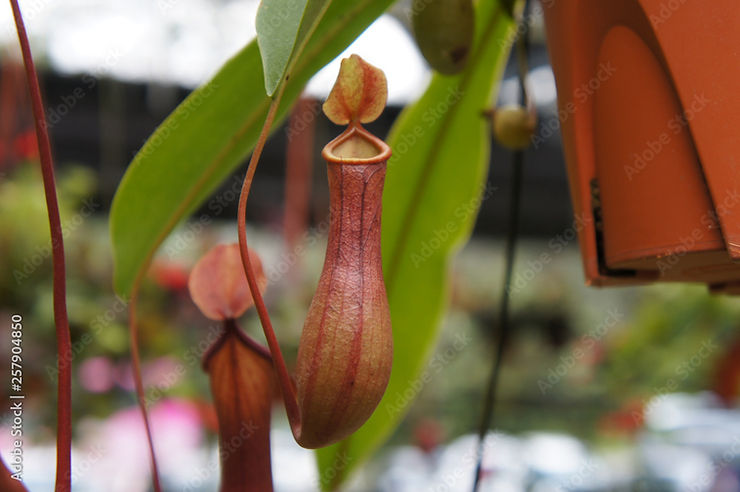By: Caroline Wang
You walk into a plant shop, ready to buy some new plants. Wandering around, you spot a beautiful sundew. Unable to resist the temptation, you slowly use your finger to touch the plant. Suddenly, you feel as though something sticky is on your finger. The plant starts curling around. Starting to feel nervous, you saw that your finger was trapped by the sundew. Instead of screaming for help, you wonder: Can plants eat humans?
The topic of plants eating humans has come up in many different movies and video games. In the classic movie Little Shop Of Horrors, a gigantic plant with shark-sized jaws survives off human blood. The Piranha Plants of the video game Mario Bros. hopes to make a snack out of a famous plumber. All these strange plants have been inspired by real-life carnivorous flora. These hungry plants use all kinds of traps, such as slippery tubes, sweet scents, and sticky leaves to lure in insects and small animals. For now, humans are safe from a plant’s mouth. However, maybe one day, we’ll find ourselves under the grasp of a sticky plant leaf.
Carnivorous plants come in many different shapes and sizes. One common type is the Venus Flytrap. These plants have tiny hairs that are attached to their leaves. If the hairs are brushed twice by an unsuspecting bug, then the leaves will snap shut, digesting the bug into small pieces.
Many people find Venus Flytraps dangerous, especially as a house plant, but experts say it can be helpful. “Despite how different Venus Flytraps are from humans, studying the structure and function of these mechanosensitive channels gives us a broader framework for understanding the ways that cells and organisms respond to touch and pressure,” says Professor Andrew Ward, PHD. He is a co-senior author and Scripps Research professor.
The Venus Flytrap’s ability to eat large mammals was first discovered in the 19th century by a British explorer called Spenser St. John (citation here).
Venus Flytraps are usually equipped with the ability to consume large mammals, such as mice. Despite its small size, “it could eat a good-sized rat or small mammal.” says National Geographic. Insects could easily get lured by the plant’s scent, and easily slip off the waxy surface into the pitcher-shaped center.
Although these plants may use their sweet scents and tricks to lure in insects, it’s not enough to pull humans into the same trap. Animals are rarely attracted to plants unless they are looking for something that can’t be found elsewhere. For a human to go near a man-eating plant, the risk must be worth it. For now, man-eating plants are only going to have to stay in our imaginations.











